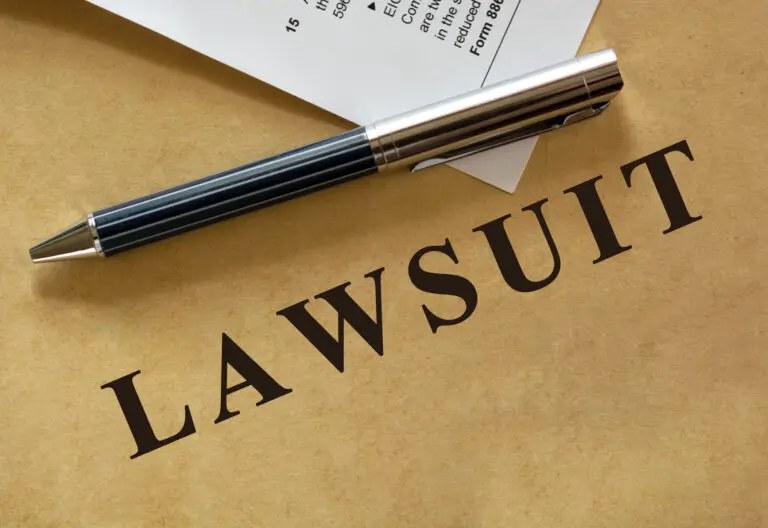When facing overwhelming debt, individuals often find themselves at a crossroads, contemplating the difficult decision of whether to file for quiebra. Two primary options available to consumers are Quiebra del capítulo 13 y Quiebra del capítulo 7. Each type offers distinct advantages and disadvantages, catering to different financial situations and goals. Understanding the key differences between these two bankruptcy chapters is crucial for making an informed decision that aligns with one’s financial circumstances and long-term objectives.
Chapter 7 bankruptcy, often referred to as “liquidation bankruptcy,” is designed to provide a fresh start by eliminating most unsecured debts. This process typically involves the sale of non-exempt assets to repay creditors, although many filers can keep most or all of their property due to generous exemption laws. On the other hand, Chapter 13 bankruptcy, known as “reorganization bankruptcy,” allows debtors to retain their assets while repaying a portion of their debts through a structured repayment plan over three to five years.
The choice between Chapter 13 and Chapter 7 bankruptcy depends on various factors, including income level, types of debt, asset ownership, and long-term financial goals. Chapter 7 is often preferred by those with limited income and primarily unsecured debts, as it offers a quicker discharge of eligible debts. Conversely, Chapter 13 may be more suitable for individuals with a steady income who wish to protect valuable assets or catch up on secured debt payments, such as mortgages or car loans.
One of the primary considerations when choosing between Chapter 13 and Chapter 7 is the means test. This test evaluates a debtor’s income and expenses to determine eligibility for Chapter 7 bankruptcy. If an individual’s income exceeds the state median for their household size, they may be required to file under Chapter 13 instead. The means test serves as a gatekeeping mechanism to ensure that those with the ability to repay some of their debts do so through a structured repayment plan.
En suspensión automática is a crucial feature of both Chapter 13 and Chapter 7 bankruptcies. This legal protection goes into effect immediately upon filing, halting most collection actions by creditors. The automatic stay provides debtors with temporary relief from creditor harassment, foreclosure proceedings, and wage garnishments. However, the duration and scope of the automatic stay can differ between Chapter 13 and Chapter 7 cases, with Chapter 13 potentially offering longer-term protection for certain debts.
In Chapter 7 bankruptcy, the process typically moves quickly, with most cases completed within four to six months. The quiebra trustee is responsible for liquidating non-exempt assets and distributing the proceeds to creditors. However, in practice, many Chapter 7 cases are “no-asset” cases, meaning the debtor has no non-exempt property for the trustee to sell. At the end of the process, eligible debts are discharged, providing the debtor with a clean financial slate.
Chapter 13 bankruptcy, in contrast, involves a more extended process lasting three to five years. During this time, the debtor makes monthly payments to a court-appointed trustee, who then distributes the funds to creditors according to the approved repayment plan. This approach allows debtors to catch up on missed payments for secured debts, potentially saving homes from foreclosure or vehicles from repossession. At the end of the repayment period, remaining eligible unsecured debts may be discharged.
The impact on credit scores is another crucial factor to consider when deciding between Chapter 13 and Chapter 7 bankruptcy. Both types of quiebra will negatively affect credit scores and remain on credit reports for several years. However, Chapter 7 bankruptcy typically stays on credit reports for up to 10 years from the filing date, while Chapter 13 bankruptcy is removed after 7 years. This difference can be significant for individuals looking to rebuild their credit and access new lines of credit in the future.
Debt discharge is a central component of both Chapter 13 and Chapter 7 bankruptcies, but the timing and extent of debt relief differ between the two. In Chapter 7, eligible debts are typically discharged within a few months of filing. Chapter 13, however, requires completion of the repayment plan before remaining eligible debts are discharged. It’s important to note that certain types of debts, such as most student loans, recent taxes, and domestic support obligations, are generally non-dischargeable in both chapters.
The treatment of secured debts is another key distinction between Chapter 13 and Chapter 7 bankruptcy. In Chapter 7, debtors must usually either surrender the collateral securing a debt, redeem the property by paying its current value in a lump sum, or reaffirm the debt and continue making payments. Chapter 13 offers more flexibility, allowing debtors to catch up on missed payments over time and potentially modify certain secured debts, such as “cramming down” car loans to the vehicle’s current value.
For homeowners facing foreclosure, Chapter 13 bankruptcy often provides more robust protections than Chapter 7. While both chapters institute an automatic stay that temporarily halts foreclosure proceedings, Chapter 13 allows debtors to cure mortgage arrears over the course of the repayment plan. This feature can be crucial for individuals seeking to save their homes from foreclosure. Additionally, in some cases, Chapter 13 may allow for the “stripping” of wholly unsecured junior liens on a primary residence, a option not available in Chapter 7.
The role of the bankruptcy trustee differs significantly between Chapter 13 and Chapter 7 cases. In Chapter 7, the trustee’s primary responsibility is to identify and liquidate non-exempt assets to repay creditors. The Chapter 7 trustee also reviews the case for potential abuse or fraud. In Chapter 13, the trustee plays a more ongoing role, receiving monthly payments from the debtor and distributing funds to creditors according to the approved repayment plan. The Chapter 13 trustee also monitors the debtor’s compliance with the plan and may request modifications if the debtor’s financial circumstances change.
Attorney fees and costs associated with filing bankruptcy can vary between Chapter 13 and Chapter 7 cases. While Chapter 7 typically requires upfront payment of attorney fees before filing, Chapter 13 often allows for some or all of the attorney fees to be paid through the repayment plan. This difference can make Chapter 13 more accessible to individuals who cannot afford to pay substantial legal fees upfront. However, the total cost of a Chapter 13 bankruptcy, including trustee fees and ongoing payments, may ultimately be higher than a Chapter 7 filing.
En exenciones por quiebra available to debtors can significantly impact the decision between Chapter 13 and Chapter 7. Exemptions allow filers to protect certain assets from liquidation in Chapter 7 or factor into the calculation of how much unsecured creditors must be paid in Chapter 13. While federal exemptions exist, many states require debtors to use state-specific exemptions, which can vary widely. Understanding the applicable exemptions is crucial for determining which chapter will best protect a debtor’s assets.
For individuals with pequeña empresa debts, the choice between Chapter 13 and Chapter 7 can have significant implications. Chapter 7 may be appropriate for those looking to close a failing business and discharge business debts. However, Chapter 13 can provide an opportunity to restructure business debts and continue operations, particularly for sole proprietors. In some cases, small business owners may also consider Chapter 11 bankruptcy, which offers more flexibility for larger or more complex business reorganizations.
The treatment of tax debts is another important consideration when choosing between Chapter 13 and Chapter 7 quiebra. While some tax debts may be dischargeable in both chapters, others are non-dischargeable. Chapter 13 can provide a structured way to repay non-dischargeable tax debts over time, potentially with reduced penalties and interest. Chapter 7, while offering a quicker discharge of eligible debts, may not provide as much relief for significant tax liabilities.
Co-signers y joint account holders may be affected differently depending on whether a debtor files Chapter 13 or Chapter 7 bankruptcy. In Chapter 7, while the primary debtor’s liability may be discharged, co-signers remain fully liable for the debt. Chapter 13 offers a special protection known as the “co-debtor stay,” which can prevent creditors from pursuing co-signers for consumer debts as long as the Chapter 13 plan is in effect and payments are being made.
The impact on future credit availability y borrowing capacity is an important long-term consideration when deciding between Chapter 13 and Chapter 7 bankruptcy. While both types of bankruptcy will make obtaining credit more difficult and expensive in the short term, the long-term effects can differ. Some lenders view Chapter 13 more favorably than Chapter 7, as it demonstrates a good-faith effort to repay debts. Additionally, the shorter reporting period for Chapter 13 on credit reports may allow for faster credit rehabilitation.
For individuals with significant equity in their homes or other valuable assets, Chapter 13 may offer better protection than Chapter 7. In Chapter 7, non-exempt equity could lead to the forced sale of assets by the trustee. Chapter 13 allows debtors to retain their property while paying unsecured creditors an amount equal to or greater than what they would receive in a Chapter 7 liquidation. This feature makes Chapter 13 particularly attractive to homeowners in states with limited homestead exemptions.
The treatment of recent credit card charges y cash advances can differ between Chapter 13 and Chapter 7 bankruptcies. In Chapter 7, certain recent charges or cash advances may be presumed fraudulent and non-dischargeable. While these presumptions also exist in Chapter 13, the extended repayment period may provide more flexibility in addressing these debts. Debtors with significant recent credit card activity should carefully consider how this might impact their bankruptcy options.
Student loan debt, which is generally non-dischargeable in bankruptcy, may be handled differently in Chapter 13 versus Chapter 7. While neither chapter typically allows for the discharge of student loans absent a showing of undue hardship, Chapter 13 can provide a temporary reprieve by including student loan payments in the repayment plan. This can allow debtors to catch up on other obligations while making reduced payments on student loans during the plan period.
The ability to modify the repayment plan is a unique feature of Chapter 13 bankruptcy that is not available in Chapter 7. If a debtor’s financial circumstances change during the three to five-year repayment period, they may request a modification of the plan. This flexibility can be crucial for adapting to job loss, medical emergencies, or other unforeseen financial challenges. In contrast, once a Chapter 7 discharge is granted, there is generally no mechanism for adjusting the outcome based on changed circumstances.
En impact on future employment is another factor to consider when choosing between Chapter 13 and Chapter 7 bankruptcy. While federal law prohibits discrimination based solely on bankruptcy filing, some employers may view bankruptcy negatively. In certain fields, particularly those involving financial responsibility, a bankruptcy filing could potentially impact job prospects. Some argue that Chapter 13 may be viewed more favorably by employers as it demonstrates a commitment to repaying debts.
For individuals with multiple properties o investment real estate, the choice between Chapter 13 and Chapter 7 can be particularly complex. Chapter 7 may require the liquidation of non-exempt properties, while Chapter 13 could allow for the retention of these assets if the repayment plan provides sufficient payments to unsecured creditors. However, the ability to retain multiple properties in Chapter 13 must be balanced against the feasibility of making ongoing mortgage payments and funding the repayment plan.
The treatment of luxury items y non-essential assets can differ between Chapter 13 and Chapter 7 bankruptcies. In Chapter 7, non-exempt luxury items may be sold by the trustee to repay creditors. In Chapter 13, while debtors may be able to retain these items, the value of non-exempt assets typically factors into the calculation of how much must be paid to unsecured creditors through the repayment plan. This consideration can be particularly relevant for individuals with valuable collections, recreational vehicles, or other high-value personal property.
En timing of the bankruptcy filing can have different implications in Chapter 13 versus Chapter 7 cases. In Chapter 7, the timing can affect the dischargeability of certain debts and the application of preferential transfer rules. In Chapter 13, the timing of the filing can impact the treatment of secured debts, particularly for car loans, due to the “910-day rule” which affects the ability to cram down vehicle loans. Strategic timing of a bankruptcy filing may yield different benefits depending on which chapter is chosen.
Domestic support obligations, such as alimony and child support, are treated as priority debts in both Chapter 13 and Chapter 7 bankruptcies. However, the approach to addressing these debts differs between the two chapters. In Chapter 13, ongoing support payments must be maintained, and any arrears must be paid in full through the repayment plan. Chapter 7 does not discharge these obligations, and debtors remain fully responsible for both ongoing payments and any arrears.
En impact on retirement accounts y pensions is an important consideration when choosing between Chapter 13 and Chapter 7 bankruptcy. Most retirement accounts are fully exempt in bankruptcy, meaning they are protected from creditors in both chapters. However, the treatment of ongoing contributions to retirement accounts may differ. In Chapter 13, the ability to continue making significant retirement contributions may be limited by the need to fund the repayment plan.
For individuals with pending lawsuits o potential legal claims, the choice between Chapter 13 and Chapter 7 can have significant implications. In both chapters, pending lawsuits against the debtor are generally stayed upon filing. However, the treatment of potential claims the debtor may have against others differs. In Chapter 7, these claims become property of the bankruptcy estate, and the trustee may pursue them for the benefit of creditors. In Chapter 13, while the claims must be disclosed, the debtor typically retains control over them.
The treatment of executory contracts y unexpired leases can vary between Chapter 13 and Chapter 7 bankruptcies. In Chapter 7, debtors must generally decide whether to assume or reject these contracts quickly. Chapter 13 provides more flexibility, allowing debtors to assume contracts and cure defaults over the course of the repayment plan. This can be particularly relevant for residential leases, business contracts, or vehicle leases.
En impact on credit utilization y debt-to-income ratios is another factor to consider when deciding between Chapter 13 and Chapter 7 bankruptcy. While both types of bankruptcy will likely result in the closure of many credit accounts, the ongoing payments in a Chapter 13 plan may affect a debtor’s debt-to-income ratio differently than the quick discharge of debts in Chapter 7. This distinction can be relevant for individuals hoping to qualify for new credit or mortgages in the years following bankruptcy.
En psychological and emotional impact of choosing between Chapter 13 and Chapter 7 bankruptcy should not be overlooked. Some individuals may find the quick discharge of debts in Chapter 7 more emotionally satisfying, providing a clean break from financial stress. Others may prefer the structured repayment approach of Chapter 13, feeling a sense of accomplishment in repaying a portion of their debts. The emotional aspects of this decision can significantly impact a debtor’s commitment to the bankruptcy process and subsequent financial recovery.
In conclusion, the decision between Chapter 13 and Chapter 7 bankruptcy is complex and highly dependent on individual circumstances. Both options offer potential paths to financial recovery, but with different approaches and outcomes. Chapter 7 provides a quicker discharge of eligible debts, potentially offering a fresh start in a matter of months. Chapter 13, while requiring a longer commitment, offers more flexibility in dealing with secured debts and the potential to save valuable assets. Factors such as income level, types of debt, asset ownership, and long-term financial goals all play crucial roles in determining the most appropriate choice. Given the complexity of bankruptcy law and the significant long-term implications of this decision, individuals considering bankruptcy should seek the advice of experienced bankruptcy attorneys to evaluate their specific situations and determine the best course of action for their financial future.
Website citations used for this article:
- https://www.uscourts.gov/services-forms/bankruptcy/bankruptcy-basics/chapter-7-bankruptcy-basics
- https://www.uscourts.gov/services-forms/bankruptcy/bankruptcy-basics/chapter-13-bankruptcy-basics
- https://www.experian.com/blogs/ask-experian/bankruptcy-chapter-7-vs-chapter-13/
- https://www.findlaw.com/bankruptcy/chapter-13/pros-and-cons-of-declaring-bankruptcy-under-chapter-13.html
- https://www.debt.org/bankruptcy/chapter-7-vs-chapter-13/









